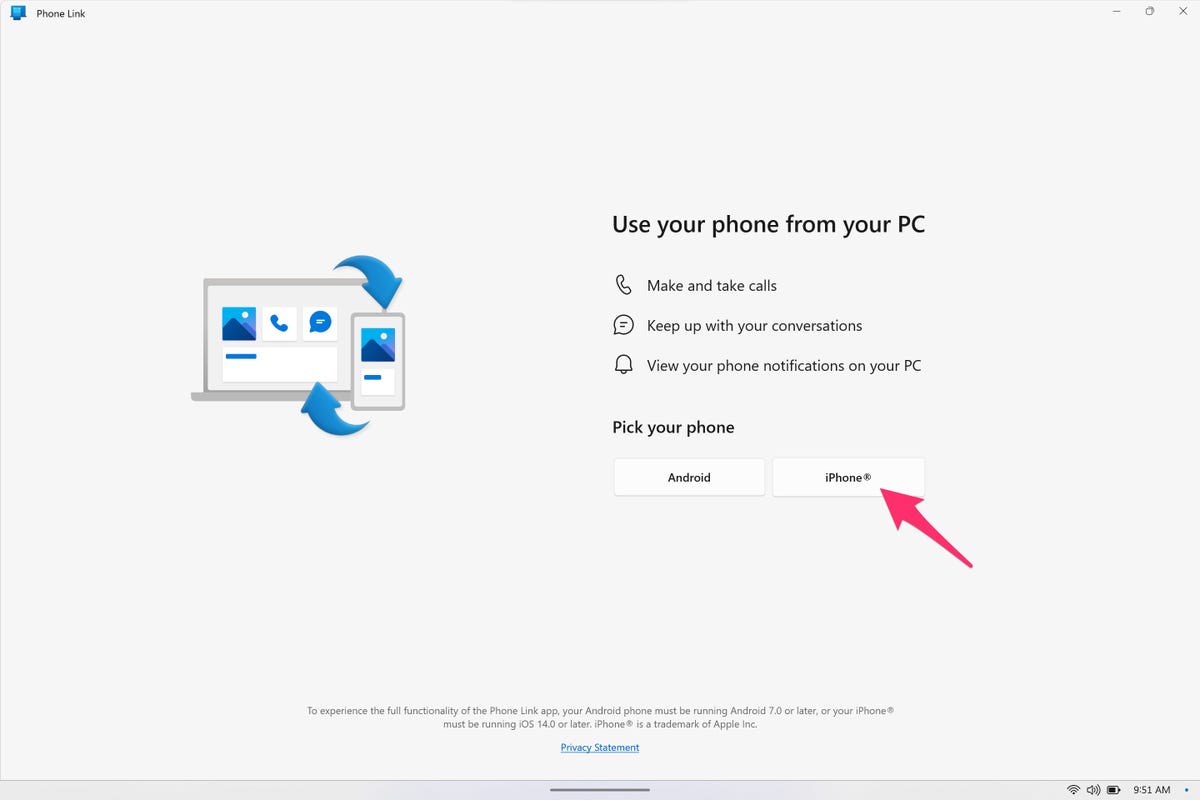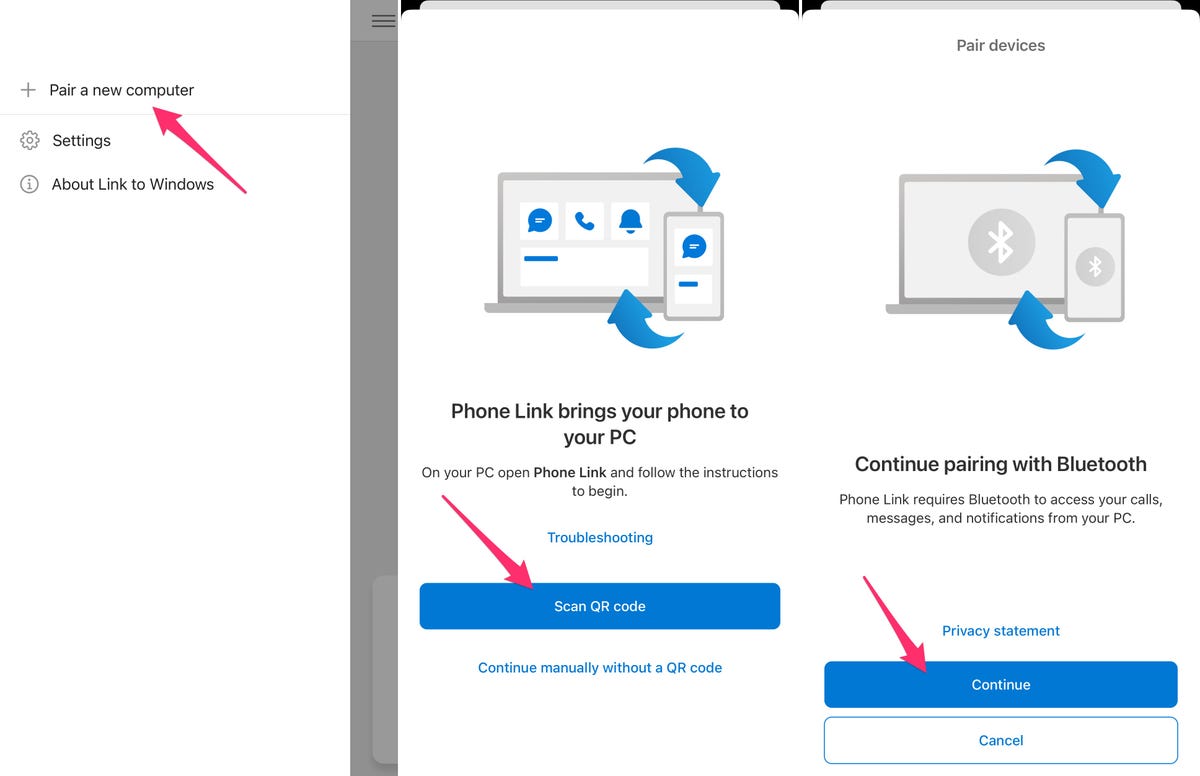If you are an iPhone user and own a Windows PC, I have good news for you. Microsoft has started testing the iPhone version of its Phone Link app, which lets you send and receive iMessages directly from your PC. Also, you can check all your phone notifications and even make or receive calls.
Android users have the ability to do much more than that, and have been able to send and receive messages for quite some time. But by extending this feature to iPhone users, you’ll no longer have to interrupt what you’re doing on your computer to fetch your iPhone every time you receive a message.
There are, however, a few drawbacks.
First of all, not everyone will have access to this feature right away. It is currently presented in Preview to Windows Insiders. Even if you follow all the steps below, you may still not be able to connect your iPhone to your PC. You won’t have access to your chat history, you won’t be able to send or receive group messages, or view or send images or videos.
but it’s better than nothing. Below, I’ll walk you through how to sign up for the Insider program, where to find the necessary iPhone app, how to pair your two devices, and finally, how to use your PC to send messages.
How to send iMessages from iPhone to PC?
Join the Insider program
If you’re not afraid of occasional bugs or glitches on your Windows 11 PC, you can join the Windows Insider program to install what amounts to a beta version of an upcoming Windows update. To register, go to Settings > Windows Update > Windows Insider Program on your computer.
If prompted, link your Microsoft account to the program by clicking the button Link an account. Once you have completed this step, you will need to select one of the eligible preview channels: Dev, Beta or Release Preview:
- As the name suggests, the Dev channel is primarily for developers who are comfortable with troubleshooting and bug fixing. This is the least stable channel of the three.
- The Beta channel is slightly more mature than the Dev channel, but you may still run into issues and bugs.
- The Release Preview channel is the most stable of the three. If you just want to preview the Phone Link app with your iPhone, this is the recommended channel.
Once you select a preview channel, a Windows update is available with the corresponding version. You need to download and install the update by going to Settings > Windows Update. When I updated my Surface Pro 8 to test this feature, I had to install several rounds of updates. So my advice? After each reboot to install and update, go back to the Windows Update page and check for more updates until there are none.
Install and configure the Phone Link app for iOS
In order for Microsoft to view your iMessage conversations on your PC, you need to install the Link to Windows app on your iPhone. Download it from the App Store and sign in with the same Microsoft account you use on your PC.
It is also advisable to check that the Phone Link application on your PC is up to date. To do this, open the Microsoft Store app, select Library > Get UpdatesThen Update all once pending updates have been found.

Screenshot by Jason Cipriani/ZDNET.
Connect iPhone and PC
With your PC and necessary apps updated, you’re ready to connect your iPhone to your computer and start using iMessage. Open the Phone Link app on your computer, and the Link to Windows app on your iPhone.
The Phone Link app offers two options for your phone: Android or iPhone. Select iPhone (if iPhone is marked as “soon”, your account does not yet have preview access. Check the app every other day to see if you have access).
In the Link to Windows app on your iPhone, swipe down the menu from the left side of the screen and select Pair a new computer at the top of the screen.
Use your smartphone’s camera to scan the QR code displayed in the Phone Link app on your computer. Follow the instructions on your iPhone and on your computer to complete the Bluetooth pairing of the two devices.
Once paired, open the Settings app on your iPhone, select Bluetooth, and find your PC’s name in the list of connected devices. Tap the icon Ithen enable the option Show Notifications.

Screenshot by Jason Cipriani/ZDNET.
Send and receive messages on PC via iPhone
Once the configuration is complete, you can open the Phone Link application on your PC; it will connect via Bluetooth to your iPhone and you will start receiving notifications for new messages, as well as any alerts you receive from your iPhone apps, directly to your computer.
You won’t be able to see older conversations and messages; you will only see what was sent or received while the app was open and there was a connection. You also won’t be able to send or receive pictures, and group messages simply won’t work. You will still need to use your iPhone for these tasks.
Apart from these two major drawbacks, you can send and receive messages (iMessages and SMS) from your iPhone, directly from your PC, which was not possible until now.
Pretty cool, right? Sending and receiving messages on an iPhone works the same way as in a Tesla. There’s no chat history and you can’t use group messages, but it’s better than nothing. And, frankly, it’s high time Microsoft found a way to do that.

Picture: Microsoft.
How soon will iMessages in Windows be available to everyone?
Microsoft did not say so. At the end of February, the company said it would start testing and collecting feedback from iPhone users who are part of the Insider program.
Since then, there have been no major announcements regarding timing or progress. If you want access to it right now, your best bet is to join the Insider program through the Release Preview channel and deal with some minor (and very rare) bugs.
Do I have to be on Windows 11 or can I use Windows 10?
According to Microsoft, Windows 11 must be installed on your PC to use Phone Link for iOS.
Can I turn off alerts for specific apps in the Phone Link app?
Yes ! Just go to the Settings page of the Phone Link app where you will find the option to turn off alerts and notifications for all apps, or for specific apps if you find you only receive all alerts from your iPhone on your PC is too noisy.
Source: ZDNet.com
